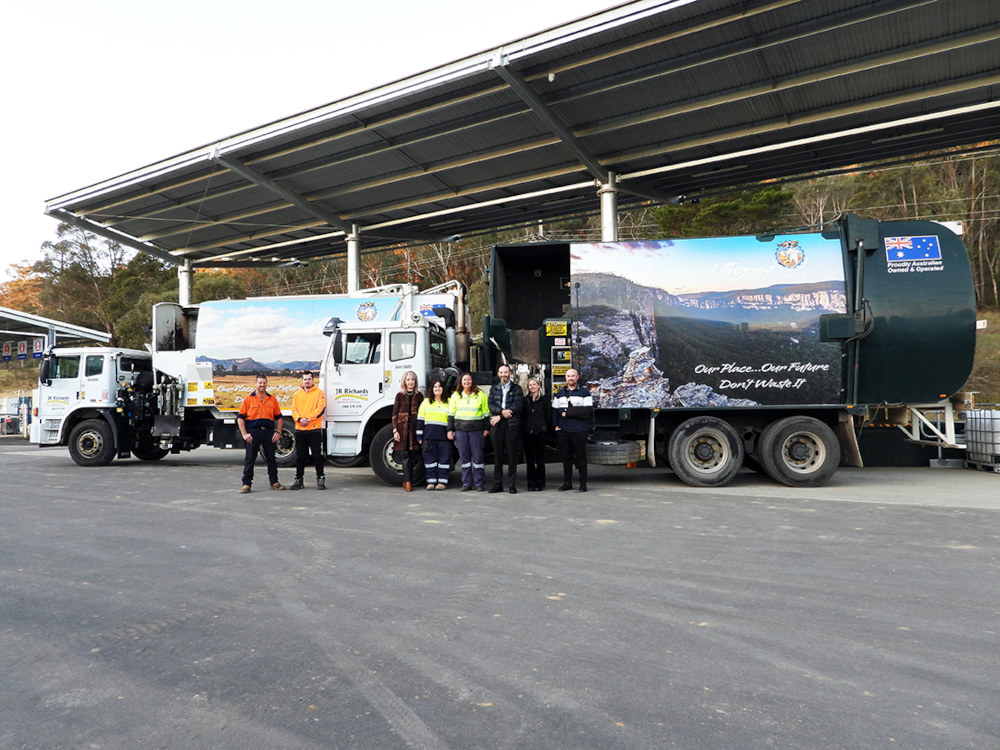
Lithgow Council considers the community to be champions of recycling.
During March and April, a staggering 362 tonnes of food and plant material was collected in the new green bin service, diverted from landfill and recycled. Having commenced in early March, the green ‘Food Organics and Garden Organics’ (FOGO) bin service for food and plant waste has been well supported by the community.
The amount of organic material collected has the city on track to meeting the Council’s prediction that around 2,600 tonnes of FOGO material can be collected annually. This is equivalent to removing over 10,000 wheelie bins of food and plant waste from landfill each year.
The food and plants collected in the green ‘FOGO’ bin are taken to the Australian Native Landscapes (ANL) organics processing facility at Blayney. While data is still limited, as the service has only recently been implemented, ANL Blayney has indicated that the material received from Lithgow has one of the lowest contamination levels of all their customers.
Matthew Trapp, Executive Manager – Water, Wastewater & Waste, said “The implementation of the ‘FOGO’ bins shows that Council and the community are successfully adapting to meet the challenges of managing waste. The way waste is managed is changing due to government policies, tighter environmental regulations and community expectations of best practice waste management. This also helps to protect the local environment and ensures ongoing provision of affordable and accessible waste facilities. The implementation of FOGO is a key part of achieving these objectives”.
The NSW Environment Protection Authority (EPA) have also recognised the community’s achievement by nominating Lithgow as a case study of a successful FOGO rollout.
“This achievement is a credit to the Council project team who developed the FOGO Program and implemented the service” said Mayor Maree Statham, “The community is also congratulated for their excellent use of the service.”.
The council has three new trucks for the kerbside service. The images on the trucks are of scenes from the local area. “The images capture some of the beauty of the natural environment; Hassans Walls, Lost City, Capertee Valley, Forty Bends and Gardens of Stone National Park” said Matthew Trapp, “They are a reminder of why it’s important for this community to stay motivated and committed to taking action to safeguard the city’s wonderful environment, into the future”.